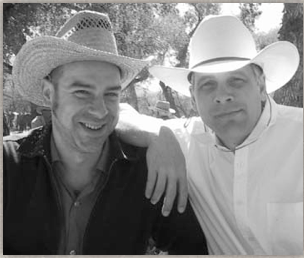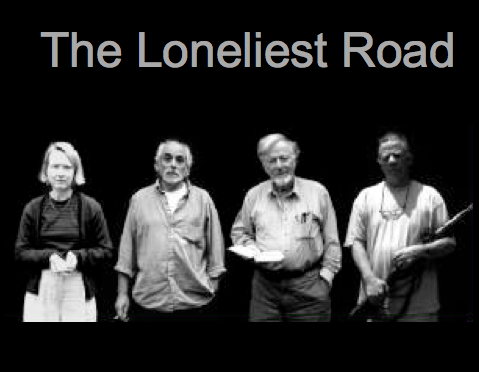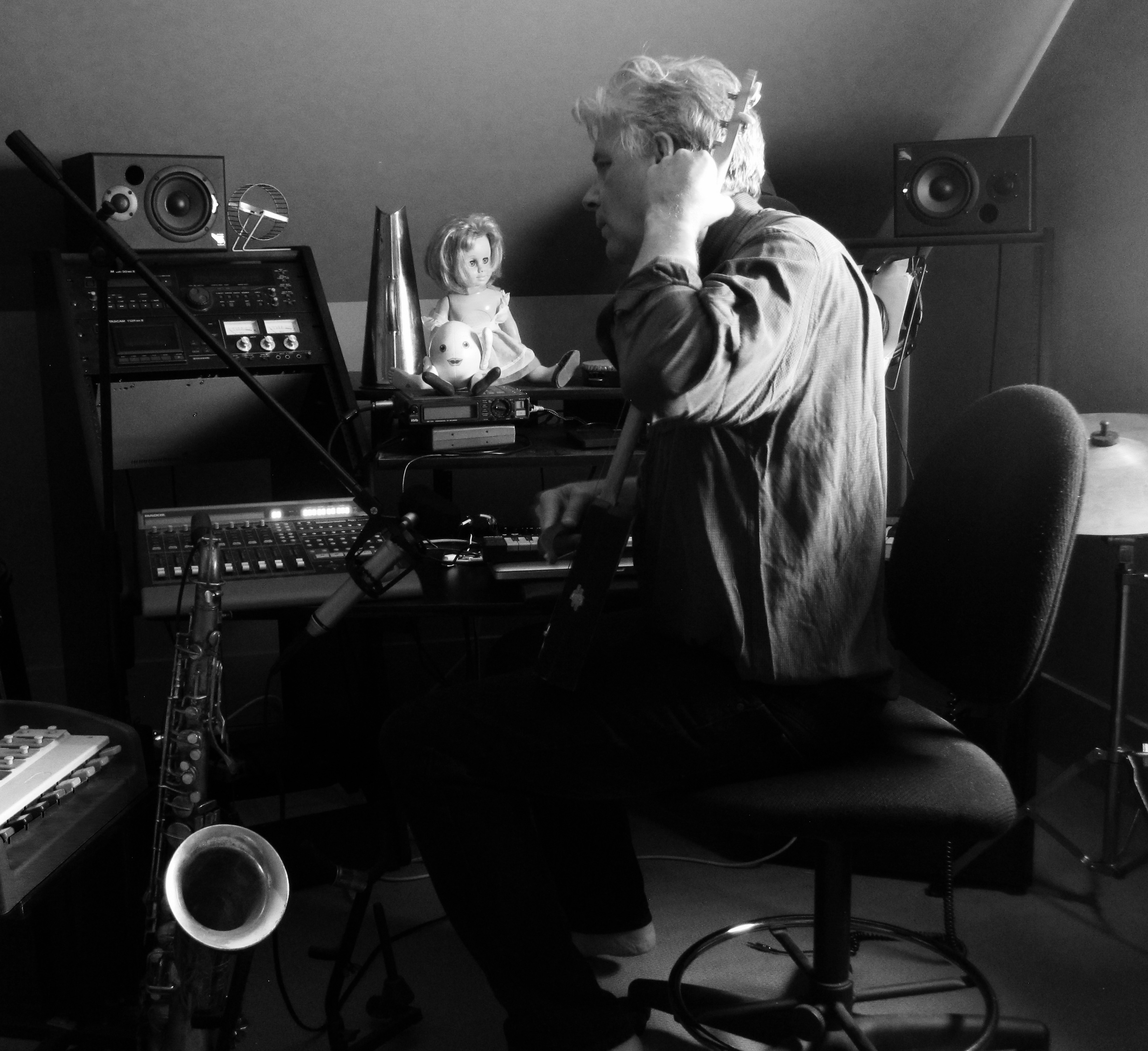Radio play in the shape of a flight by the Hungry Raven along Route Five Zero in the naked state of Nevada. With music composed and performed by The Books.
First broadcast: BBC Radio 3, October 2003.

Gregory Whitehead, writer and director of The Loneliest Road, interviewed by Gordon House.
GH So Gregory – where’s The Loneliest Road, and how lonely is it?
GW The Loneliest Road is an actual road which does exist; it’s the designation for a stretch of highway in the state of Nevada, through a fairly barren desert landscape. But, of course, it’s also a metaphorical road – The Loneliest Road of the American spirit, in every sense of that word, in the year 2003. My objective is to invite the listener on a journey along and over and across this territory via words, sounds and music.
GH And who are the people we meet on this road?
GW In addition to the pirate radio host, who calls herself The Hungry Raven, there are two main characters. The first is an individual whose life work has been to memorise the Oxford Anthology of American Poetry. Every word of that anthology he’s able to draw out of his memory and then – in the same way that indigenous cultures would use landscape as a memory device – he’s using The Loneliest Road as a mnemonic device, with mile signs along the road triggering off each poem. So he drives the road back and forth, back and forth, back and forth three rounds trips a week – and it’s a long road. Why? Well, for the answer to that, you have to listen to his interview with The Hungry Raven.
GH And the second key individual?
GW An iconic figure of the American imagination, the morally righteous assassin, in this case, one Oswald Norris, born the day Jack Ruby shot Oswald. And unlike the poet, who is constantly in motion, Oswald is fixed in space, looking at cars going by on the road. Now there are not a lot of cars on the Loneliest Road – that’s why it’s The Loneliest Road – but 70 or 80 each day go past him and he “sights in” each one through his rifle, and we overhear him as he imagines the inhabitants of those cars, and unwinds his critique of a fallen America, a critique that is both lucid and slightly mad.
GH But it’s a metaphorical road as well as a real one?
GW Yes. And those two characters are the key – poet, assassin, poet, and assassin, turning around and even inside each other; which is which? I believe that’s very much where we are in America right now. There is, always, the Walt Whitman America – the heroic, the genuine romanticism, the idealism of Whitman – that I think is still very much here, though battered. But sometimes the idealism takes on a violent, and even savage tone, often with reference to a Higher Power, which would seem to justify anything. Hear the angel whisper, and pull the trigger. The final chorus of the theme song is “A hungry raven in the sky, a wounded rabbit slow to die; bones piled in the sun, America has all the fun. It’s the Loneliest Road.”

Gregory Whitehead with Oswald Norris (left).




November 30th, 2020 at 7:16 pm
[…] Anne Undeland: Actor […]
November 4th, 2022 at 12:24 pm
[…] And here is that same voice, vividly present along The Loneliest Road: […]